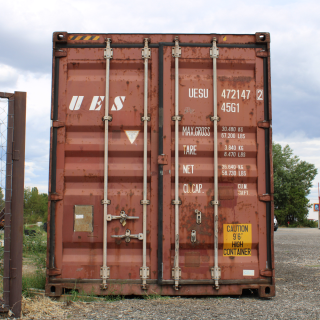Maritime/Sea Container Sizes

When someone decides on maritime shipping, it's crucial to have a clear understanding of the available sea container sizes in the market. While the internet provides numerous useful pieces of information, it also presents many irrelevant details that, instead of aiding, can complicate the decision-making process. Our goal is to provide clarity in today's blog post and offer helpful guidance to those considering container purchase.
The Common Sea Container Sizes Today
The key to efficient shipping is working with well-defined, predictable units. Therefore, in international logistics, two sea container sizes have become widespread. However, it's worth noting that both share a standardized height of 245 cm.
Sea Container Sizes: Choosing for Shipping
If you are looking to purchase a sea container for transportation, it's essential to thoroughly research what would be the best investment for you. It's advisable to seek the assistance of a logistics expert for this purpose. This ensures that you make a rational, economical decision.
Uses for Used Sea Containers
Sea containers can be reused for maritime transportation on numerous occasions. However, even when they have served their time in the shipping industry, their lifespan doesn't end there! With proper maintenance (and occasionally refurbishment), they can become safe and practical storage facilities.
20-Foot Container
The most widespread version among sea container sizes is the 20-foot container. In fact, it is considered the fundamental unit for maritime shipping (you'll find out more about why in the following paragraphs). Standard dimensions for a 20-foot sea container are: 6 meters in length, 2.45 meters in height. Their advantage lies in their extremely lightweight structure, yet they are durable. They can be easily stacked, relocated, promoting maximum space savings.
Since the 20-foot container is the most prevalent among sea containers, it's crucial to pay close attention to your choice in the vast selection, especially if purchasing a used container is the goal. At Mobilainer, we understand the importance of the success of transportation and storage, which is why we guarantee the quality of our containers.
Sea Container Sizes: The 40-Foot Sea Container
The 40-foot sea containers are also highly popular, benefiting from many advantages similar to the 20-foot containers. In the case of such a large size, particular attention must be paid to durability and quality, as the integrity of the vast amount of goods stored inside depends on it. The bases of the 40-foot sea containers available at Mobilainer are clean, spotless, and the side walls are corrosion-resistant, providing excellent resistance to both wind and frost. The double-wing doors on the short sides operate excellently and can be fully opened, while the frame structure of the containers is also flawless.
Sea Containers: A Brief History
The sea container sizes are now well-known and widespread, but have you ever wondered why they turned out this way? To answer this question, we need to take a brief stroll through the history of containerized maritime shipping.
The use of containers in maritime transport is approaching its centennial celebration, having been employed globally for a very long time. Its roots trace back to the United Kingdom, where tankers used in World War II were first converted for logistical purposes. The 20-foot, or roughly 6-meter, length quickly became so prevalent that it became the fundamental unit of maritime container transport: even determining the capacity of ships is based on this standard. Therefore, if you see that a ship has a capacity of ten thousand TEUs, it means it can carry the cargo equivalent of 10,000 twenty-foot containers.
Mobilainer's mission is to help everyone find the ideal sea container size for their needs. If we've sparked your interest, feel free to contact us!
Email: mobilainer@gmail.com
Mobile: +36202677933
